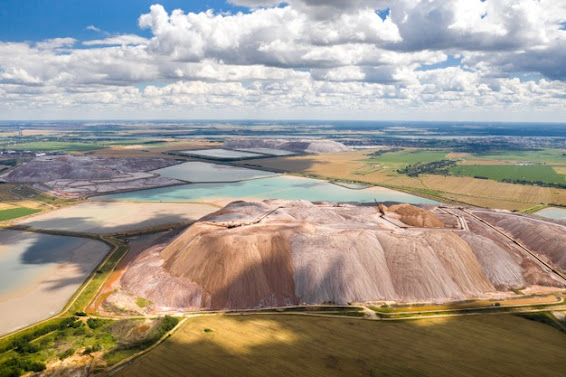Decline in Potash Content in Agricultural Soils Worldwide and Need for Regular Inputs of Potash to Maintain Good Productivity to Boost Demand for Potash Fertilizers
Potassium
salts in the form of nitrates, sulfates and chlorides are the forms of potash used
in fertilizer. There are two types of potash fertilizers available in the
market: wet and dry. Wet potash deposits are those formed during the process of
river dredging and river revitalization. The minerals in these deposits are
very fine and often, it takes millions of years for any noticeable potash
effects to appear. However, these fine deposits can be very valuable because
they provide excellent base materials for the various industries including
manufacturing, construction and farming.
There
are various sources of potash
fertilizers that include, potassium chloride, potassium sulfate,
potassium-magnesium sulfate, potassium thiosulfate, and potassium nitrate. Potassium
chloride is usually the least expensive source of potash. Potassium nitrate finds
application in high-yielding crops. Potash fertilizers tend to improve the
fertility of the soil by promoting the development of microorganisms. They
increase the fertility of the plant by regulating the nitrogen level in it.
Potash does this by providing a source of nitrogen to the plants through its
potassium content. This happens because potassium, like sulfur, forms a
protective layer on the roots of the plants. When plants get their nitrogen
from potash, they do not need to manure the land in order to do their job of
increasing the nitrogen content of the soil. This further ensures that the
nutrients are being properly distributed in the soil.
Another
advantage of potash fertilizers is its capability of decrease the level of salt
in the soil, as a result, the soil is able to retain water. This helps control
the evaporation process and makes sure that the water stays in the soil, as
compared to moving out due to heavy rains. Potash is known to neutralize the
effects of various salts. Potash absorption also reduces the amount of the
sodium and calcium in the soil, as these minerals are known to cause damage to
the roots of the plants through rotting.
Potash
fertilizers are very useful for increasing the fertility of the soil. It is
available in the form of a powdery substance. The powdery form is highly
soluble in water and hence, can easily be mixed into the water for application.
Potash plays a major role in soil where
the pH is alkaline. It increases the pH in soil. Potash promotes large fruit
and vegetable yields and enhances plant health. Potassium must be adequately
supplied in the soil to maintain good growth of plants. Low supply of potassium
may reduce yields and increase use of water. Moreover, the plants may become
more susceptible to pest and disease damage, which decreases the quality of
yield.
In
the recent past, agricultural soils across the world have witnessed decline in
potash content. Such scenario has increased the need for regular inputs of
potash to maintain good productivity. However, excess use of potash fertilizers
can cause problems for plants that prefer acidic or balanced pH soils.
easily
be mixed into the water for application. Potash plays a major role in soil where the pH
is alkaline. It increases the pH in soil. Potash promotes large fruit and vegetable
yields and enhances plant health. Potassium must be adequately supplied in the
soil to maintain good growth of plants. Low supply of potassium may reduce
yields and increase use of water. Moreover, the plants may become more
susceptible to pest and disease damage, which decreases the quality of yield.
In
the recent past, agricultural soils across the world have witnessed decline in
potash content. Such scenario has increased the need for regular inputs of
potash to maintain good productivity. However, excess use of potash fertilizers
can cause problems for plants that prefer acidic or balanced pH soils.

Comments
Post a Comment